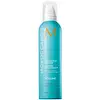What's inside
What's inside
 Key Ingredients
Key Ingredients

No key ingredients
 Benefits
Benefits

 Concerns
Concerns

 Ingredients Side-by-side
Ingredients Side-by-side

Water
Skin ConditioningNiacinamide
SmoothingPhenylbenzimidazole Sulfonic Acid
UV AbsorberCaffeine
Skin ConditioningPolysorbate 20
EmulsifyingBenzophenone-4
UV AbsorberPhenoxyethanol
PreservativeSodium Benzoate
MaskingBenzyl Alcohol
PerfumingPEG-12 Dimethicone
Skin ConditioningSodium Hydroxide
BufferingCocamidopropyl Betaine
CleansingAcetamide Mea
HumectantPropylene Glycol
HumectantTetrasodium EDTA
Methyl Nicotinate
SoothingMentha Arvensis Leaf Oil
MaskingParfum
MaskingPolysorbate 80
EmulsifyingPolysorbate 60
EmulsifyingPEG-23m
Emulsion StabilisingMentha Piperita Oil
MaskingLimonene
PerfumingCamellia Sinensis Leaf Extract
AntimicrobialCystine Bis-Pg-Propyl Silanetriol
Skin ConditioningTocopheryl Acetate
AntioxidantLecithin
EmollientBiotin
AntiseborrhoeicCitrus Paradisi Peel Extract
PerfumingHumulus Lupulus Extract
AntimicrobialUrtica Dioica Leaf Extract
Skin ConditioningSilica
AbrasiveCitric Acid
BufferingVaccinium Myrtillus Leaf Extract
AstringentAcer Saccharum Extract
Skin ConditioningCitrus Limon Peel Extract
EmollientSaccharum Officinarum Extract
MoisturisingFaex Extract
Skin ConditioningPropylparaben
PreservativeCitrus Aurantium Dulcis Fruit Extract
MaskingPotassium Sorbate
PreservativeMaltodextrin
AbsorbentMethylparaben
PreservativeEthylparaben
PreservativeButylparaben
MaskingBHT
AntioxidantWater, Niacinamide, Phenylbenzimidazole Sulfonic Acid, Caffeine, Polysorbate 20, Benzophenone-4, Phenoxyethanol, Sodium Benzoate, Benzyl Alcohol, PEG-12 Dimethicone, Sodium Hydroxide, Cocamidopropyl Betaine, Acetamide Mea, Propylene Glycol, Tetrasodium EDTA, Methyl Nicotinate, Mentha Arvensis Leaf Oil, Parfum, Polysorbate 80, Polysorbate 60, PEG-23m, Mentha Piperita Oil, Limonene, Camellia Sinensis Leaf Extract, Cystine Bis-Pg-Propyl Silanetriol, Tocopheryl Acetate, Lecithin, Biotin, Citrus Paradisi Peel Extract, Humulus Lupulus Extract, Urtica Dioica Leaf Extract, Silica, Citric Acid, Vaccinium Myrtillus Leaf Extract, Acer Saccharum Extract, Citrus Limon Peel Extract, Saccharum Officinarum Extract, Faex Extract, Propylparaben, Citrus Aurantium Dulcis Fruit Extract, Potassium Sorbate, Maltodextrin, Methylparaben, Ethylparaben, Butylparaben, BHT
Alternatives
Ingredients Explained
These ingredients are found in both products.
Ingredients higher up in an ingredient list are typically present in a larger amount.
Parfum is a catch-all term for an ingredient or more that is used to give a scent to products.
Also called "fragrance", this ingredient can be a blend of hundreds of chemicals or plant oils. This means every product with "fragrance" or "parfum" in the ingredients list is a different mixture.
For instance, Habanolide is a proprietary trade name for a specific aroma chemical. When used as a fragrance ingredient in cosmetics, most aroma chemicals fall under the broad labeling category of “FRAGRANCE” or “PARFUM” according to EU and US regulations.
The term 'parfum' or 'fragrance' is not regulated in many countries. In many cases, it is up to the brand to define this term.
For instance, many brands choose to label themselves as "fragrance-free" because they are not using synthetic fragrances. However, their products may still contain ingredients such as essential oils that are considered a fragrance by INCI standards.
One example is Calendula flower extract. Calendula is an essential oil that still imparts a scent or 'fragrance'.
Depending on the blend, the ingredients in the mixture can cause allergies and sensitivities on the skin. Some ingredients that are known EU allergens include linalool and citronellol.
Parfum can also be used to mask or cover an unpleasant scent.
The bottom line is: not all fragrances/parfum/ingredients are created equally. If you are worried about fragrances, we recommend taking a closer look at an ingredient. And of course, we always recommend speaking with a professional.
Learn more about ParfumPhenoxyethanol is a preservative that has germicide, antimicrobial, and aromatic properties. Studies show that phenoxyethanol can prevent microbial growth. By itself, it has a scent that is similar to that of a rose.
It's often used in formulations along with Caprylyl Glycol to preserve the shelf life of products.
Polysorbate 20 is made by combining ethoxylation of sorbitan, ethylene oxide, and lauric acid. It is a mild cleansing agent, surfactant, and emulsifier.
As a surfactant, it helps collect dirt and oils for washing. Emulsifiers prevent oils and water from separating.
Polysorbate 20 also adds scent to a product. Since it is made using sorbitol, it has a sweet scent. Sorbitol can also be found in fruits such as apples and peaches.
The lauric acid used to create Polysorbate 20 is often derived from coconuts.
Polysorbate 20 may not be fungal acne safe.
Learn more about Polysorbate 20Potassium Sorbate is a preservative used to prevent yeast and mold in products. It is commonly found in both cosmetic and food products.
This ingredient comes from potassium salt derived from sorbic acid. Sorbic acid is a natural antibiotic and effective against fungus.
Both potassium sorbate and sorbic acid can be found in baked goods, cheeses, dried meats, dried fruit, ice cream, pickles, wine, yogurt, and more.
You'll often find this ingredient used with other preservatives.
Learn more about Potassium SorbatePropylene Glycol is an odorless, colorless liquid. As a humectant, it helps skin retain moisture. It also aids in delivering active ingredients.
Another role of this ingredient is preventing a product from melting or freezing. Propylene glycol also adds antimicrobrial properties to a product, elongating product lifespan.
This ingredient is considered an organic alcohol and commonly added into both cosmetics and foods.
Those with sensitive skin or conditions may develop a rash when using this ingredient.
Learn more about Propylene GlycolWater. It's the most common cosmetic ingredient of all. You'll usually see it at the top of ingredient lists, meaning that it makes up the largest part of the product.
So why is it so popular? Water most often acts as a solvent - this means that it helps dissolve other ingredients into the formulation.
You'll also recognize water as that liquid we all need to stay alive. If you see this, drink a glass of water. Stay hydrated!
Learn more about Water